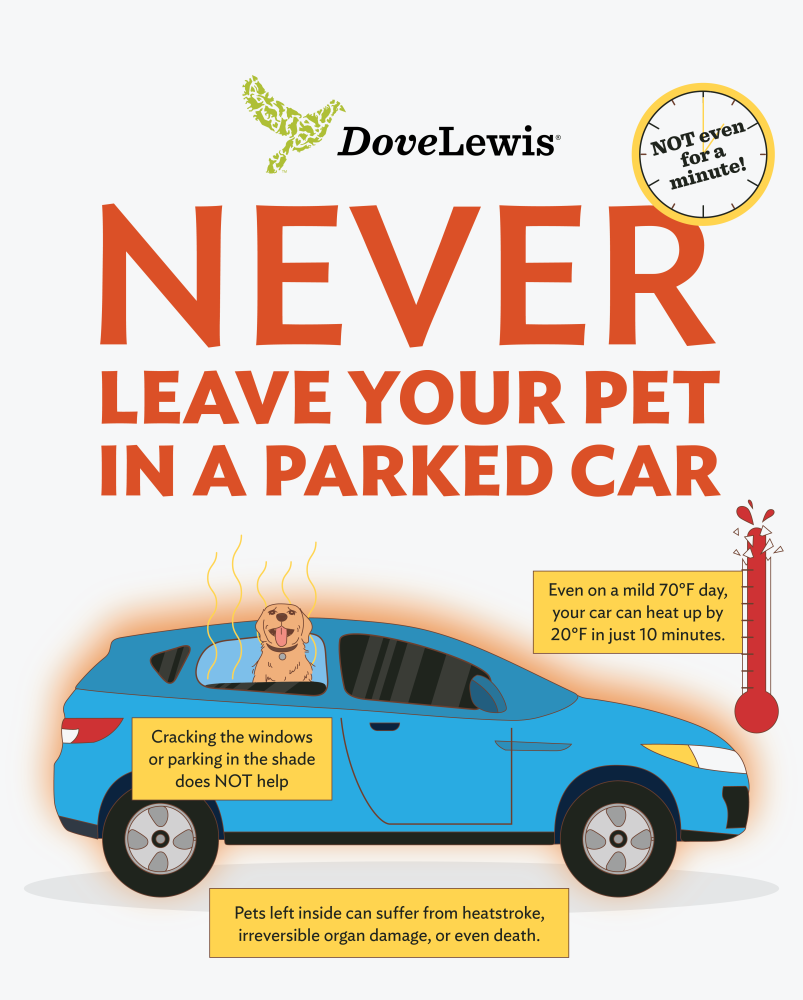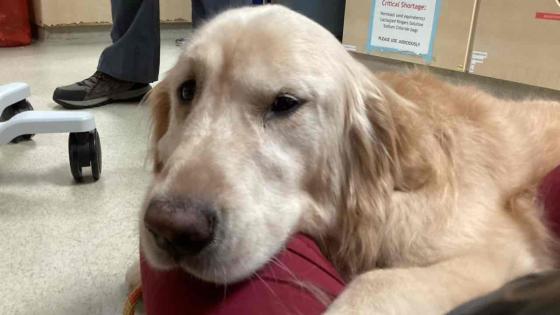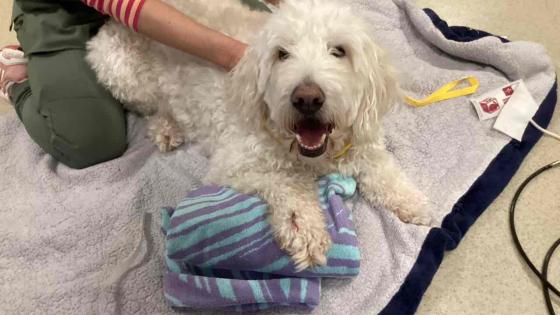Why You Should Never Leave Your Pet in the Car
You’re just running inside for a minute. The windows are cracked. The car’s in the shade. Your pet will be fine… right?
The truth is that a “quick stop” could become a life-threatening emergency in minutes.
 On warm days, even those that feel mild to us, the temperature inside a parked car can climb rapidly, creating a deadly environment for pets. And unlike humans, dogs and cats can’t sweat to cool themselves. Their internal temperature rises fast, and heatstroke can set in quickly.
On warm days, even those that feel mild to us, the temperature inside a parked car can climb rapidly, creating a deadly environment for pets. And unlike humans, dogs and cats can’t sweat to cool themselves. Their internal temperature rises fast, and heatstroke can set in quickly.
The Facts
- In just 10 minutes, a car’s interior can rise by 20 degrees, even with the windows cracked.
- A pet’s normal body temperature is between 100–103°F. Temperatures above 104°F are considered an emergency, especially when caused by overheating or overexertion.
- Once their temperature reaches 106°F, pets are at serious risk for organ failure, brain swelling, or even death. In some cases, heatstroke can also lead to clotting disorders like disseminated intravascular coagulation (DIC).
- Brachycephalic breeds (like French Bulldogs, Pugs, and Boxers) are at even greater risk due to their compromised airways and inability to cool themselves efficiently.
Signs of heatstroke include:
- Excessive panting or drooling
- Bright red gums
- Vomiting or diarrhea
- Weakness, collapse, or seizures
If you suspect your pet is overheated, act immediately:
- Move your pet to a cool, shaded area
- Apply cool (not cold or iced) water to their body, especially the paws, armpits, and belly
- Offer small sips of water (not large amounts)
- Seek emergency veterinary care immediately—even if they seem to recover
Using ice-cold water can actually make things worse by constricting blood vessels and trapping heat inside the body. That’s why gradual cooling is safest.
Our pets depend on us for protection and care, especially when the weather turns warm. What might seem like a harmless break in your day can have life-threatening consequences for them. By staying mindful and planning ahead, you give them the best chance to enjoy every sunny afternoon safely.
A Simple Rule That Could Save a Life:
If you can’t bring them in, don’t bring them along.
Recent Posts
Why Chocolate Is So Risky for Pets
Milk or dark, candy or cake – chocolate may be one of our favorite sweet treats, but it’s definitely not meant to be consumed by our pets.
Holiday Hazards for Your Pet
Deck the halls with boughs of holly … but be sure it’s out of reach of your furry friends! It’s easy to get swept up in the festivities of the season, but don’t forget that added fun means added risks for your pets.



